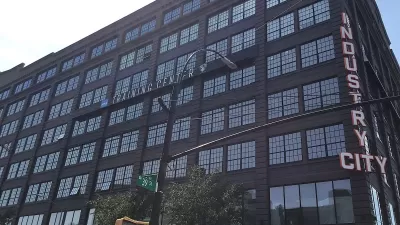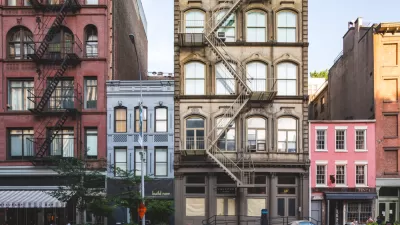The rezonings in question occurred during the Bloomberg administration, but advocates are seizing on the relevance of that experience to the rezonings of the de Blasio administration.

Caroline Spivack shares news of a new study by the Churches United for Fair Housing (CUFHH) that "lays bare the inequalities spurred by city-led rezonings, and points to the dire need for the de Blasio administration to study the racial impacts of land use actions poised to reshape New York City neighborhoods…"
The "Zoning & Racialized Displacement in NYC" [pdf] report analyzes two specific rezoning efforts from the Bloomberg administration—the 2003 Park Slope and 2005 Williamsburg rezonings—claiming the changes "displaced thousands of black and Latino residents as the neighborhoods’ populations grew," according to Spivack.
"Between 2000 and 2015, Williamsburg and Greenpoint saw a population increase of more than 20,000, but simultaneously saw a decrease of about 15,000 Latino residents, according to the report."
The advocates behind the report are using those findings to push for a citywide bill that "would mandate the city conduct a racial impact study for land use actions that require an environmental review."
As noted in the article, de Blasio's administration has achieved a wave of rezonings around the city, in East New York, Downtown Far Rockaway, East Harlem, Jerome Avenue, Inwood, and Staten Island’s Bay Street Corridor. "Three others are on the immediate horizon in Brooklyn’s Bushwick and Gowanus neighborhoods, and for a swath of the Bronx’s Southern Boulevard," according to Spivack.
Many of the same points, and from the other side of the issue, were debated recently with regard to the Williamsburg rezoning after comments made by Rep. Alexandria Ocasio-Cortze earlier this fall.
FULL STORY: How NYC rezonings spur ‘racialized displacement’ throughout the city

Maui's Vacation Rental Debate Turns Ugly
Verbal attacks, misinformation campaigns and fistfights plague a high-stakes debate to convert thousands of vacation rentals into long-term housing.

Planetizen Federal Action Tracker
A weekly monitor of how Trump’s orders and actions are impacting planners and planning in America.

In Urban Planning, AI Prompting Could be the New Design Thinking
Creativity has long been key to great urban design. What if we see AI as our new creative partner?

King County Supportive Housing Program Offers Hope for Unhoused Residents
The county is taking a ‘Housing First’ approach that prioritizes getting people into housing, then offering wraparound supportive services.

Researchers Use AI to Get Clearer Picture of US Housing
Analysts are using artificial intelligence to supercharge their research by allowing them to comb through data faster. Though these AI tools can be error prone, they save time and housing researchers are optimistic about the future.

Making Shared Micromobility More Inclusive
Cities and shared mobility system operators can do more to include people with disabilities in planning and operations, per a new report.
Urban Design for Planners 1: Software Tools
This six-course series explores essential urban design concepts using open source software and equips planners with the tools they need to participate fully in the urban design process.
Planning for Universal Design
Learn the tools for implementing Universal Design in planning regulations.
planning NEXT
Appalachian Highlands Housing Partners
Mpact (founded as Rail~Volution)
City of Camden Redevelopment Agency
City of Astoria
City of Portland
City of Laramie





























